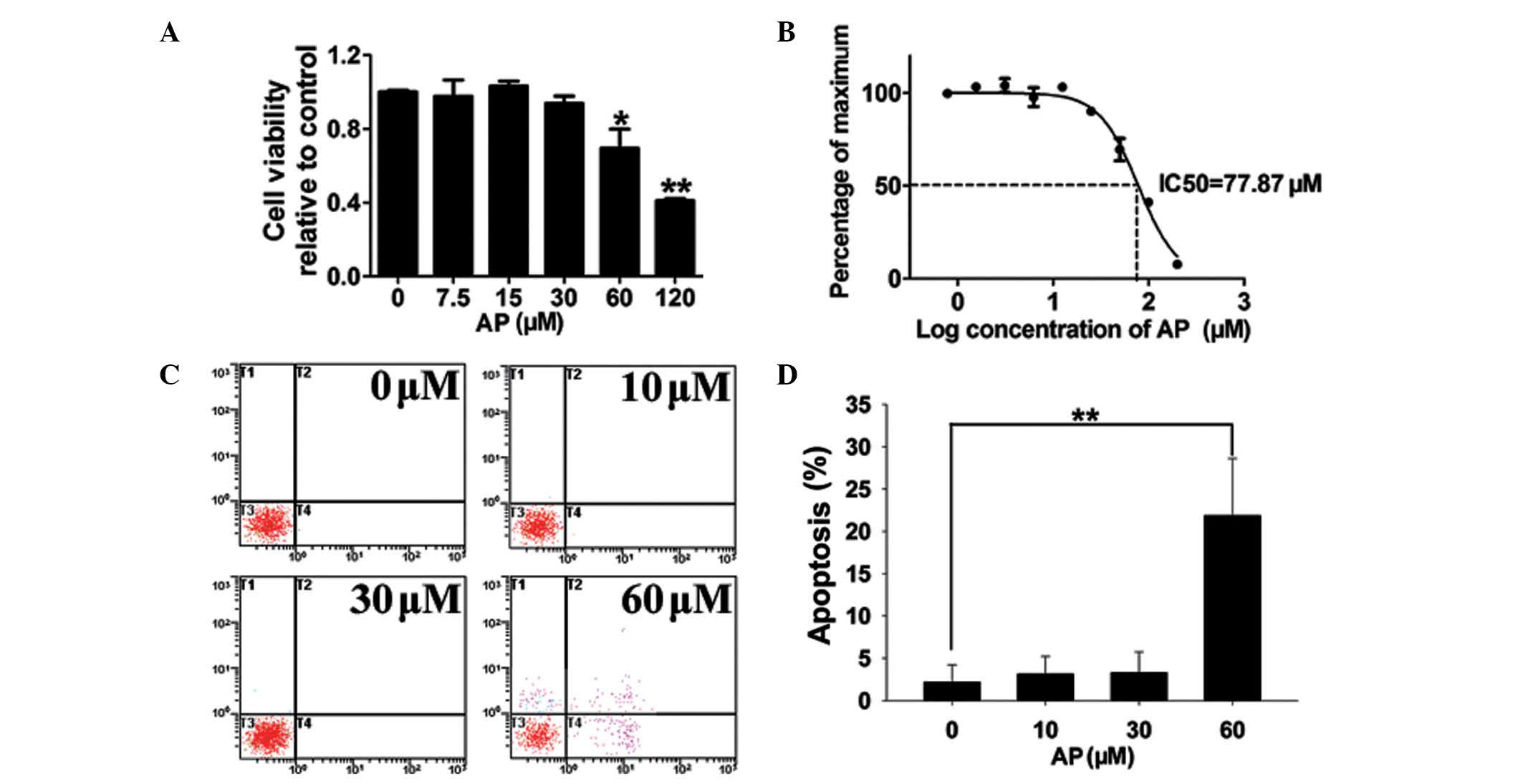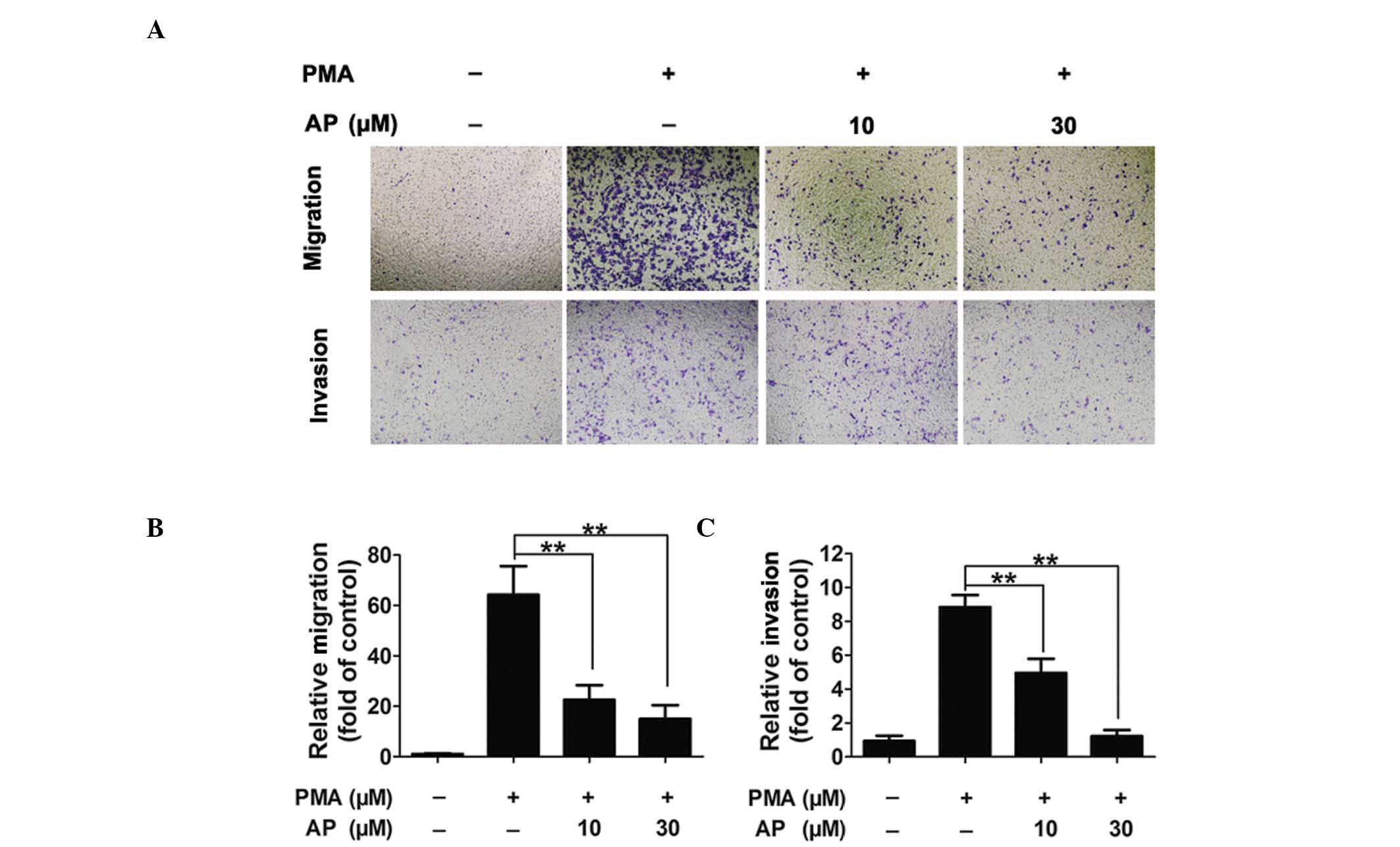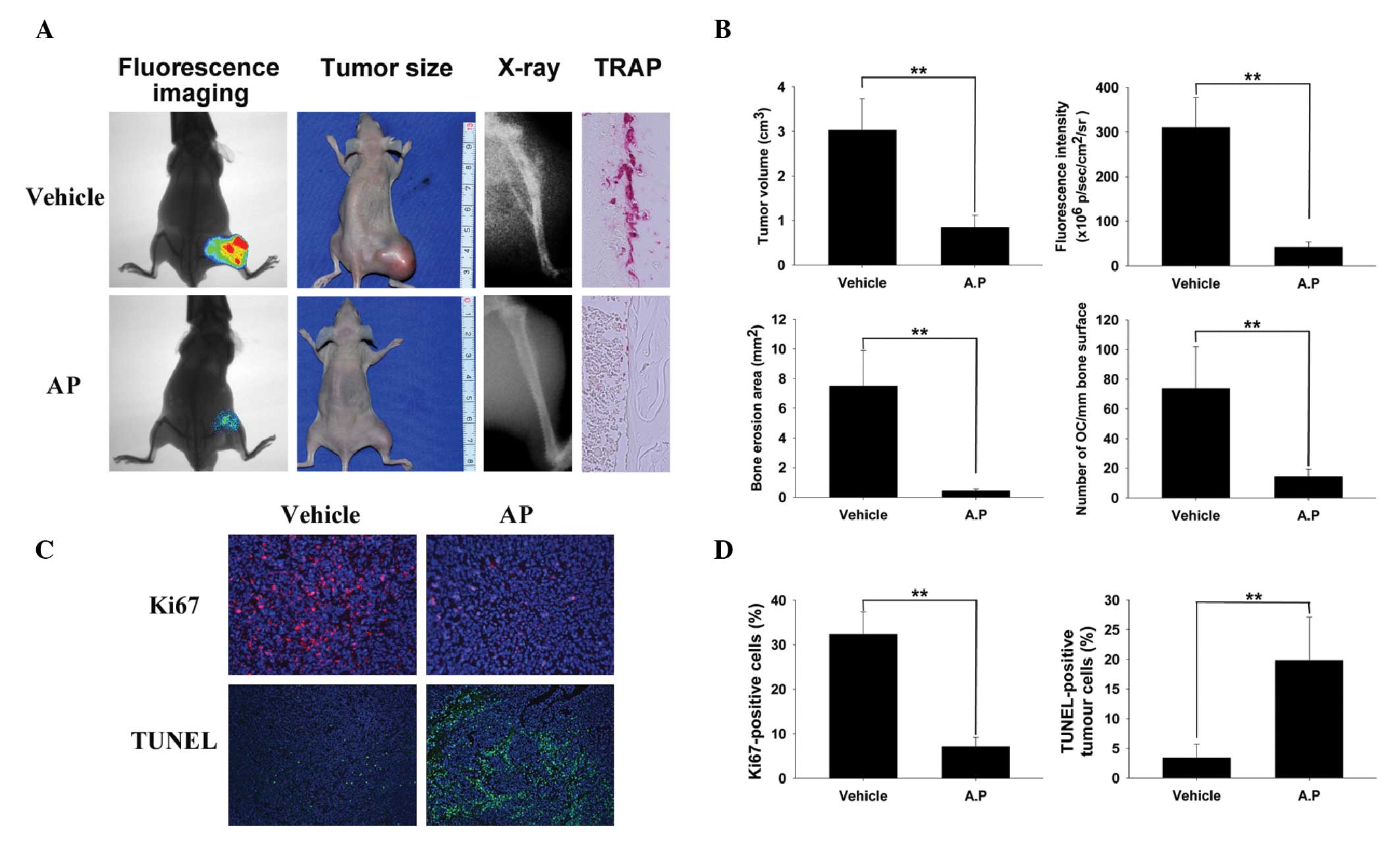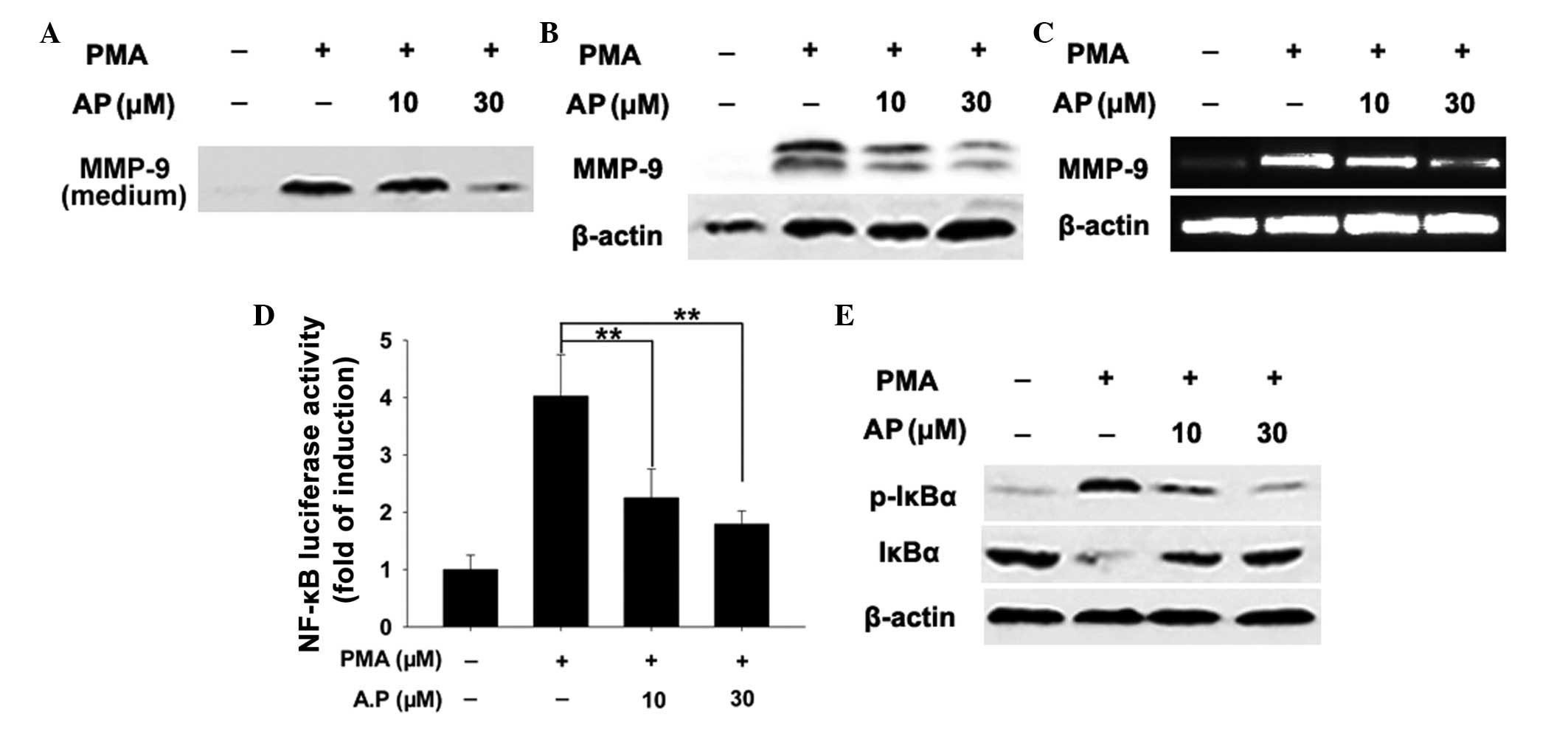|
1
|
American Cancer Society. Breast cancer
facts & figures 2007–2008. American Cancer Society, Inc;
Atlanta, GA: pp. 1–13. 2007
|
|
2
|
Gonzalez-Angulo AM, Morales-Vasquez F and
Hortobagyi GN: Overview of resistance to systemic therapy in
patients with breast cancer. Breast Cancer Chemosensitivity. Yu D
and Hung MC: Springer; New York, NY: pp. 1–22. 2007
|
|
3
|
Lin CW, Shen SC, Hou WC, Yang LY and Chen
YC: Heme oxygenase-1 inhibits breast cancer invasion via
suppressing the expression of matrix metalloproteinase-9. Mol
Cancer Ther. 7:1195–1206. 2008. View Article : Google Scholar : PubMed/NCBI
|
|
4
|
Gialeli C, Theocharis AD and Karamanos NK:
Roles of matrix metalloproteinases in cancer progression and their
pharmacological targeting. FEBS J. 278:16–27. 2011. View Article : Google Scholar
|
|
5
|
Kessenbrock K, Plaks V and Werb Z: Matrix
metalloproteinases: regulators of the tumor microenvironment. Cell.
141:52–67. 2010. View Article : Google Scholar : PubMed/NCBI
|
|
6
|
Deryugina EI and Quigley JP: Pleiotropic
roles of matrix metalloproteinases in tumor angiogenesis:
contrasting, overlapping and compensatory functions. Biochim
Biophys Acta. 1803:103–120. 2010. View Article : Google Scholar :
|
|
7
|
Shuman Moss LA, Jensen-Taubman S and
Stetler-Stevenson WG: Matrix metalloproteinases: changing roles in
tumor progression and metastasis. Am J Pathol. 181:1895–1899. 2012.
View Article : Google Scholar : PubMed/NCBI
|
|
8
|
Brinckerhoff CE and Matrisian LM: Matrix
metalloproteinases: a tail of a frog that became a prince. Nat Rev
Mol Cell Biol. 3:207–214. 2002. View
Article : Google Scholar : PubMed/NCBI
|
|
9
|
Overall CM and López-Otín C: Strategies
for MMP inhibition in cancer: innovations for the post-trial era.
Nat Rev Cancer. 2:657–672. 2002. View
Article : Google Scholar : PubMed/NCBI
|
|
10
|
Chakraborti S, Mandal M, Das S, Mandal A
and Chakraborti T: Regulation of matrix metalloproteinases: an
overview. Mol Cell Biochem. 253:269–285. 2003. View Article : Google Scholar : PubMed/NCBI
|
|
11
|
Egeblad M and Werb Z: New functions for
the matrix metalloproteinases in cancer progression. Nat Rev
Cancer. 2:161–174. 2002. View
Article : Google Scholar : PubMed/NCBI
|
|
12
|
Sato H and Seiki M: Regulatory mechanism
of 92 kDa type IV collagenase gene expression which is associated
with invasiveness of tumor cells. Oncogene. 8:395–405.
1993.PubMed/NCBI
|
|
13
|
Ling H, Zhang Y, Ng KY and Chew EH:
Pachymic acid impairs breast cancer cell invasion by suppressing
nuclear factor-κB-dependent matrix metalloproteinase-9 expression.
Breast Cancer Res Treat. 126:609–620. 2011. View Article : Google Scholar
|
|
14
|
Weng CJ, Chau CF, Hsieh YS, Yang SF and
Yen GC: Lucidenic acid inhibits PMA-induced invasion of human
hepatoma cells through inactivating MAPK/ERK signal transduction
pathway and reducing binding activities of NF-kappaB and AP-1.
Carcinogenesis. 29:147–156. 2008. View Article : Google Scholar
|
|
15
|
Coon JT and Ernst E: Andrographis
paniculata in the treatment of upper respiratory tract infections:
a systematic review of safety and efficacy. Planta Med. 70:293–298.
2004. View Article : Google Scholar : PubMed/NCBI
|
|
16
|
Jiang X, Yu P, Jiang J, et al: Synthesis
and evaluation of antibacterial activities of andrographolide
analogues. Eur J Med Chem. 44:2936–2943. 2009. View Article : Google Scholar : PubMed/NCBI
|
|
17
|
Wang LJ, Zhou X, Wang W, et al:
Andrographolide inhibits oral squamous cell carcinogenesis through
NF-κB inactivation. J Dental Res. 90:1246–1252. 2011. View Article : Google Scholar
|
|
18
|
Rajagopal S, Kumar RA, Deevi DS,
Satyanarayana C and Rajagopalan R: Andrographolide, a potential
cancer therapeutic agent isolated from Andrographis paniculata. J
Exp Ther Oncol. 3:147–158. 2003. View Article : Google Scholar : PubMed/NCBI
|
|
19
|
Chiou WF, Lin JJ and Chen CF:
Andrographolide suppresses the expression of inducible nitric oxide
synthase in macrophage and restores the vasoconstriction in rat
aorta treated with lipopolysaccharide. Br J Pharmacol. 125:327–334.
1998. View Article : Google Scholar : PubMed/NCBI
|
|
20
|
Shen YC, Chen CF and Chiou WF:
Andrographolide prevents oxygen radical production by human
neutrophils: possible mechanism(s) involved in its
anti-inflammatory effect. Br J Pharmacol. 135:399–406. 2002.
View Article : Google Scholar : PubMed/NCBI
|
|
21
|
Trivedi NP, Rawal UM and Patel BP: Potency
of andrographolide as an antitumor compound in BHC-induced liver
damage. Integr Cancer Ther. 8:177–189. 2009. View Article : Google Scholar : PubMed/NCBI
|
|
22
|
Handa SS and Sharma A: Hepatoprotective
activity of andrographolide against galactosamine & paracetamol
intoxication in rats. Indian J Med Res. 92:284–292. 1990.PubMed/NCBI
|
|
23
|
Harjotaruno S, Widyawaruyanti A,
Sismindari and Zaini NC: Apoptosis inducing effect of
andrographolide on TF-47 human breast cancer cell line. Afr J
Tradit Complement Altern Med. 4:345–351. 2007.
|
|
24
|
Kumar S, Patil SH, Sharma P, et al:
Andrographolide inhibits osteopontin expression and breast tumor
growth through down regulation of PI3 kinase/Akt signaling pathway.
Curr Mol Med. 12:952–966. 2012. View Article : Google Scholar : PubMed/NCBI
|
|
25
|
Chao CY, Lii CK, Hsu YT, et al: Induction
of heme oxygenase-1 and inhibition of TPA-induced matrix
metalloproteinase-9 expression by andrographolide in MCF-7 human
breast cancer cells. Carcinogenesis. 34:1843–1851. 2013. View Article : Google Scholar : PubMed/NCBI
|
|
26
|
Ooi LL, Zhou H, Kalak R, et al: Vitamin D
deficiency promotes human breast cancer growth in a murine model of
bone metastasis. Cancer Res. 70:1835–1844. 2010. View Article : Google Scholar : PubMed/NCBI
|
|
27
|
Zheng Y, Zhou H, Modzelewski JR, et al:
Accelerated bone resorption, due to dietary calcium deficiency,
promotes breast cancer tumor growth in bone. Cancer Res.
67:9542–9548. 2007. View Article : Google Scholar : PubMed/NCBI
|
|
28
|
Traxler P, Allegrini PR, Brandt R, et al:
AEE788: a dual family epidermal growth factor receptor/ErbB2 and
vascular endothelial growth factor receptor tyrosine kinase
inhibitor with antitumor and antiangiogenic activity. Cancer Res.
64:4931–4941. 2004. View Article : Google Scholar : PubMed/NCBI
|
|
29
|
Wu W, Onn A, Isobe T, et al: Targeted
therapy of orthotopic human lung cancer by combined vascular
endothelial growth factor and epidermal growth factor receptor
signaling blockade. Mol Cancer Ther. 6:471–483. 2007. View Article : Google Scholar : PubMed/NCBI
|
|
30
|
Li H, Zhai Z, Liu G, et al: Sanguinarine
inhibits osteoclast formation and bone resorption via suppressing
RANKL-induced activation of NF-κB and ERK signaling pathways.
Biochem Biophys Res Commun. 430:951–956. 2013. View Article : Google Scholar
|
|
31
|
Ooi LL, Zheng Y, Zhou H, et al: Vitamin D
deficiency promotes growth of MCF-7 human breast cancer in a rodent
model of osteosclerotic bone metastasis. Bone. 47:795–803. 2010.
View Article : Google Scholar : PubMed/NCBI
|
|
32
|
Ghosh S and Hayden MS: New regulators of
NF-kappaB in inflammation. Nat Rev Immunol. 8:837–848. 2008.
View Article : Google Scholar : PubMed/NCBI
|
|
33
|
Ghosh S and Baltimore D: Activation in
vitro of NF-kappa B by phosphorylation of its inhibitor I kappa B.
Nature. 344:678–682. 1990. View Article : Google Scholar : PubMed/NCBI
|
|
34
|
Duffy MJ, Maguire TM, Hill A, McDermott E
and O’Higgins N: Metalloproteinases: role in breast carcinogenesis,
invasion and metastasis. Breast Cancer Res. 2:252–257. 2000.
View Article : Google Scholar
|
|
35
|
Park JM, Kim A, Oh JH and Chung AS:
Methylseleninic acid inhibits PMA-stimulated pro-MMP-2 activation
mediated by MT1-MMP expression and further tumor invasion through
suppression of NF-kappaB activation. Carcinogenesis. 28:837–847.
2007. View Article : Google Scholar
|
|
36
|
Takada Y, Ichikawa H, Badmaev V and
Aggarwal BB: Acetyl-11-keto-beta-boswellic acid potentiates
apoptosis, inhibits invasion, and abolishes osteoclastogenesis by
suppressing NF-kappa B and NF-kappa B-regulated gene expression. J
Immunol. 176:3127–3140. 2006. View Article : Google Scholar : PubMed/NCBI
|
|
37
|
Huang Q, Shen HM and Ong CN: Inhibitory
effect of emodin on tumor invasion through suppression of activator
protein-1 and nuclear factor-kappaB. Biochem Pharmacol. 68:361–371.
2004. View Article : Google Scholar : PubMed/NCBI
|













